This coming weekend sees the return of World Photo Day for 2018. To celebrate, Special Collections and Archives staff have selected one of their favourite photographs from within the collections and explained why it is special.
Jenny Higham, Head of Special Collections and Archives
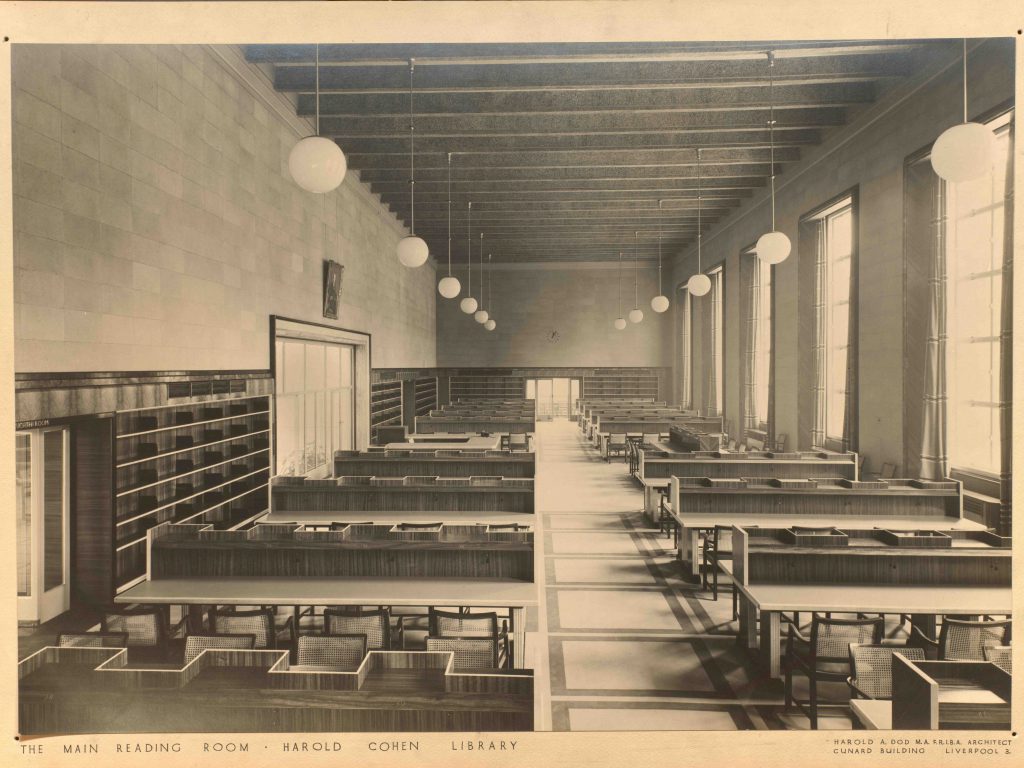
“As I’ve found it impossible to pick a favourite across all the collections, I thought I would choose this photograph of the main reading room in the Harold Cohen Library, taken for the firm of its architect, Harold Dod. A recent deposit from the University’s Facilities, Commercial and Residential Services, the photograph shows the scale and style of the new building, funded by Liverpool businessman Cohen and opened by the former prime minister, Earl Baldwin of Bewdley on May 21st 1938.”
Katy Hooper, Special Collections Librarian

“This beautiful photograph album from the Rathbone papers shows May Rathbone at various young ages; the photographs, which are decorated with Victorian pen-and-ink drawings and/or studio props (from which historic photos can be dated), shows a determined little girl/young woman (the only child in her family to survive childhood), who later went on to become a doctor, mountaineer, and botanist.”
Jo Klett, University Archivist
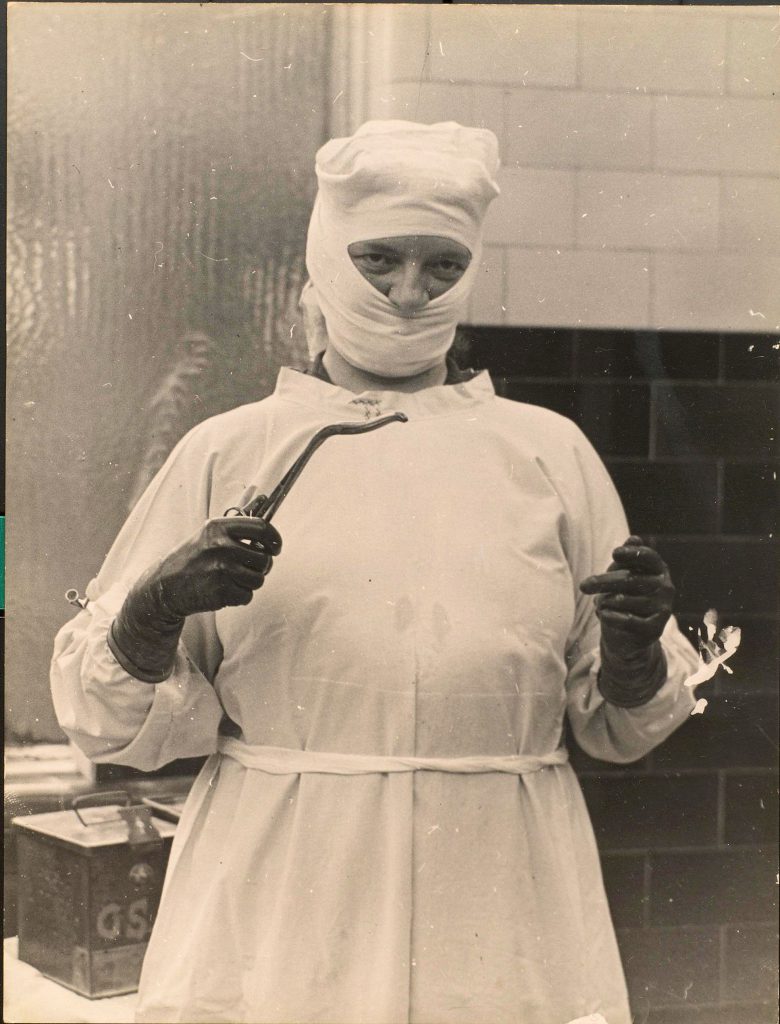
“Sister Benn with a pair of forceps in an operating theatre, at Liverpool Royal Infirmary in the early-mid 20th C. What can I say?!”
Andy Sawyer, Science Fiction Librarian

“These are two of the most iconic photos in Science Fiction history: the first science fiction convention at Leeds Theosophical Hall in 1937.
The “group photo” is most of those attending, including Liverpool’s Eric Frank Russell, then at the very beginning of his writing career. And Les Johnson, Secretary of the Liverpool Science Fiction Group.”
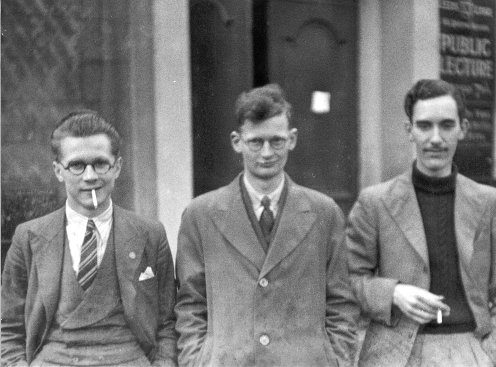
“The three unlikely suspects above are the three most important men in 20th century British Science Fiction.
Left to right: Walter Gillings, founder of the first British fan group who spent many years trying to establish a British science fiction magazine, which he finally did just before the Second World War.
Arthur C. Clarke, almost certainly the most famous British sf writer after H. G. Wells, then writing in fanzines and promoting the British Interplanetary Society. He had just moved to London (1936).
J. “Ted” Carnell, who after the war became editor of the influential NEW WORLDS magazine and later edited a series of “New Writings in Science Fiction” anthologies.
Without these three, it’s doubtful if the British would have had much of a presence in Science Fiction.”
Siân Wilks, Archivist (Cunard)
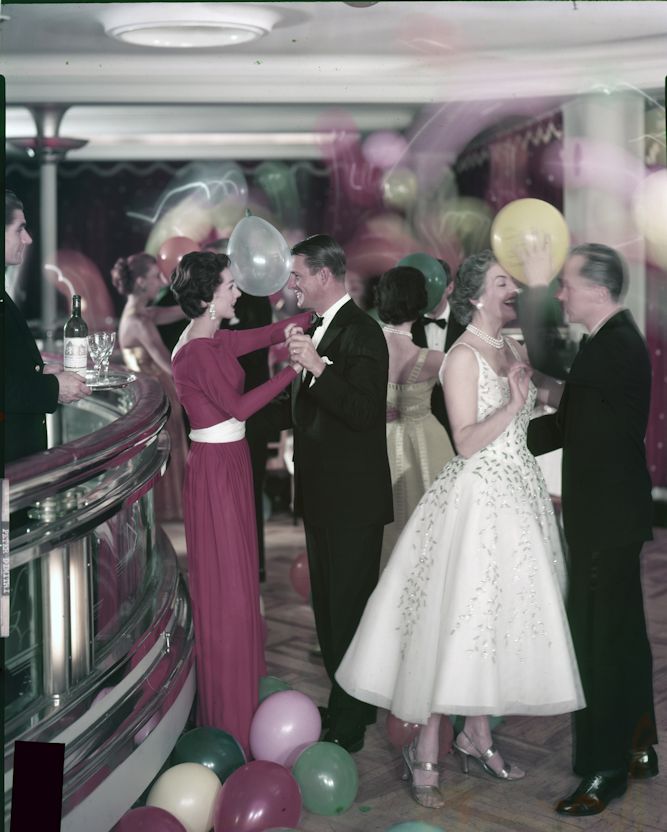
“Choosing just one photograph from the many thousands that can be found within the Cunard archive is an almost impossible task. With this in mind I have selected one of the few colour transparencies that can be found within the collection that show passengers dancing on board RMS Queen Mary. It looks like getting there really was half the fun!”
Niamh Delaney, Assistant Librarian (Special Collections)
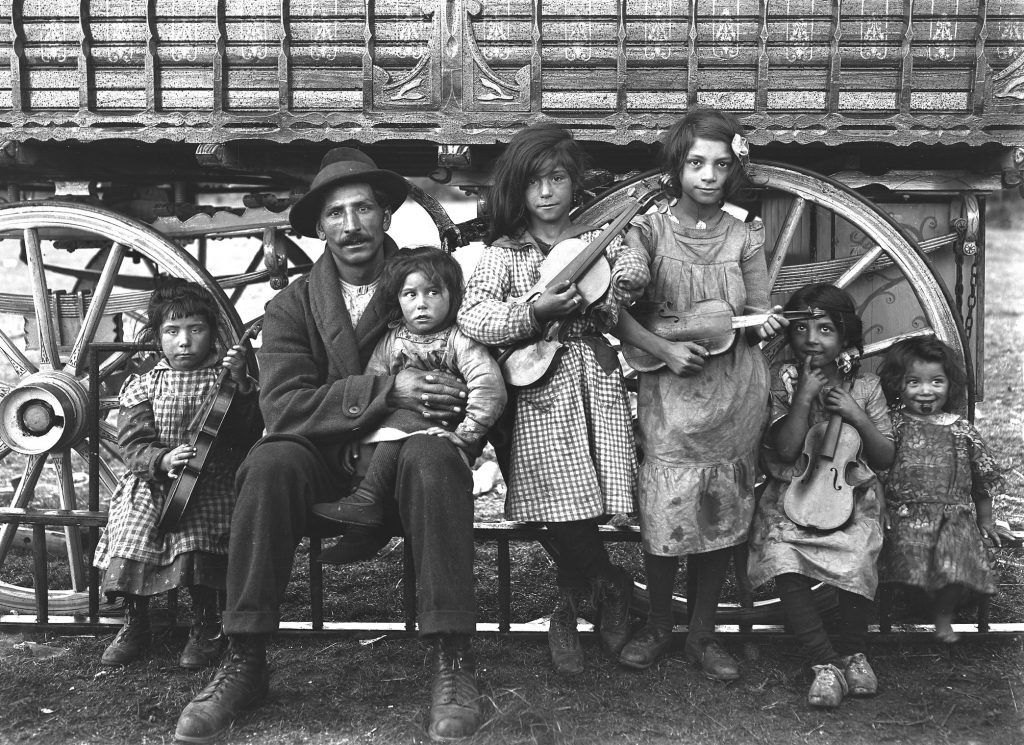
“This image shows a family of Belgian Gypsies – Carlo Basili [or Vasili] and his children, at Barnet, Herts. It was taken by Fred Shaw, a member of the Gypsy Lore Society, who had met and photographed the family two years previously; he therefore had a friendly relationship with the family, and as a fluent speaker of various Romani dialects, was well known by Romany communities. Other examples of Shaw’s work are currently on display in Paris at the exhibition Mondes tsiganes: La fabrique des images (#MondesTsiganes @MNHI; more information can be found online here.)”
Josette Reeves, Archives Cataloguer
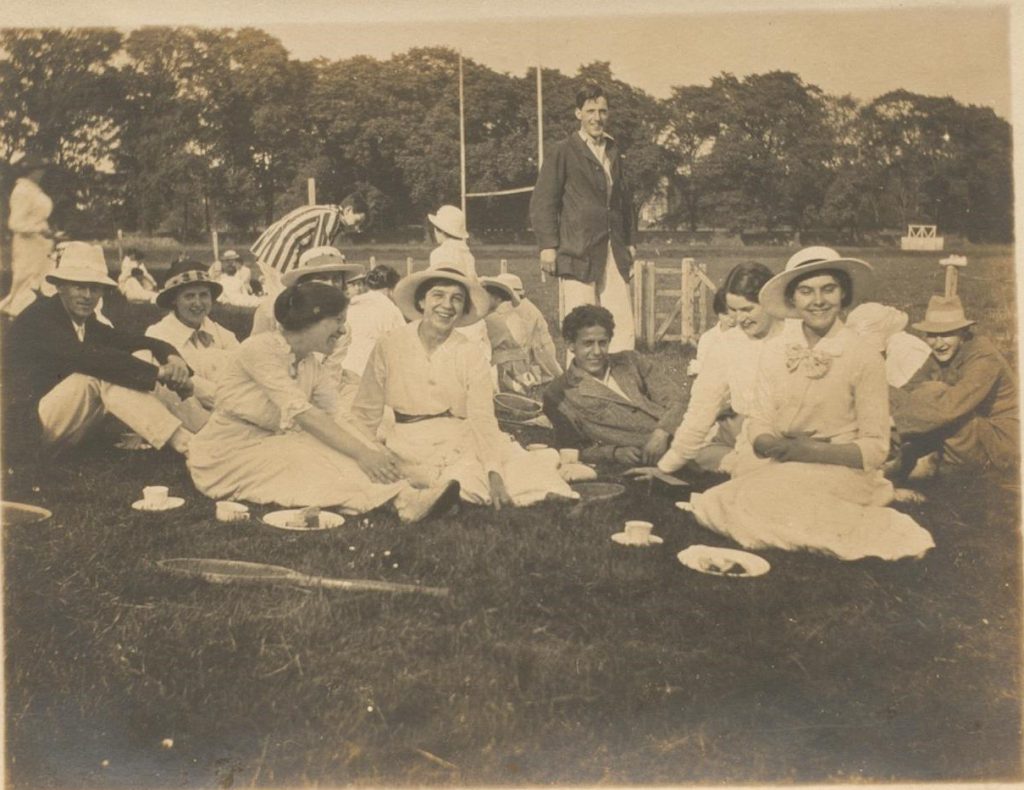
Robyn Orr, Library Assistant
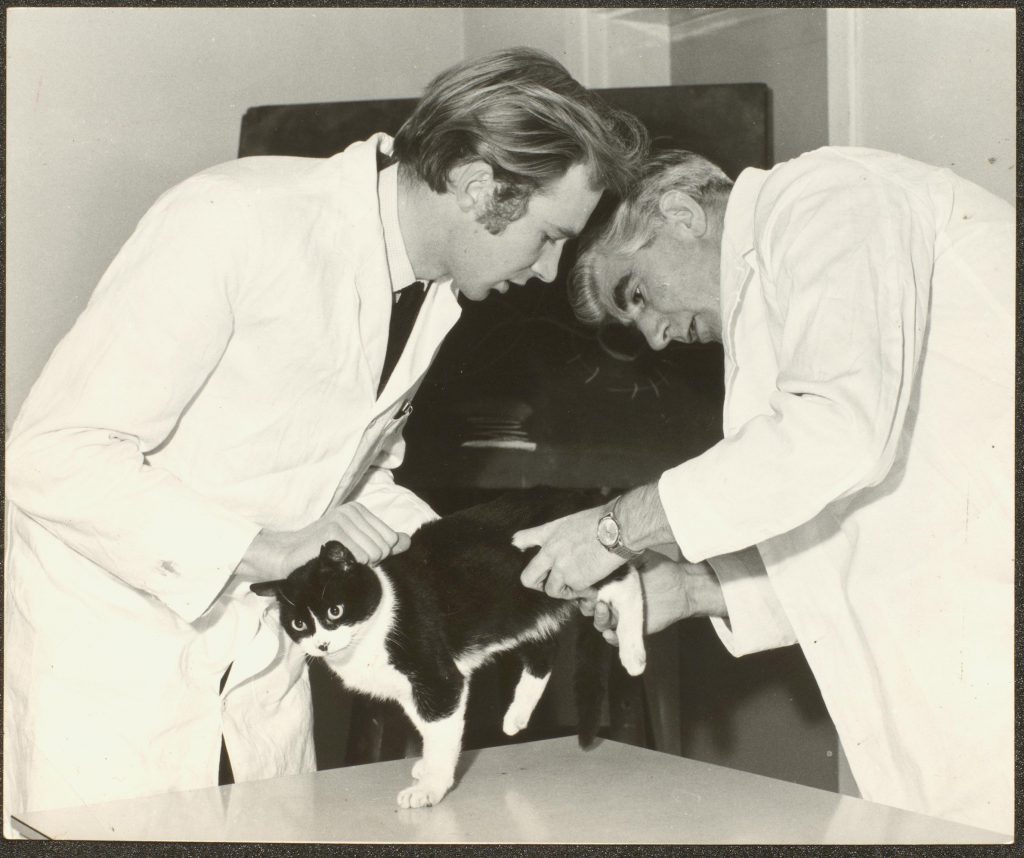
“It was hard to pick just the one, but any photograph including a cat is a winner for me. This particular cat is having an examination of his back leg by the Vets at Leahurst Veterinary School, at some point between the 1960s and 1980s. His little shocked face says it all… You can see more Special Collections and Archives material relating to cats here!”
Michaela Garland, Graduate Library Assistant
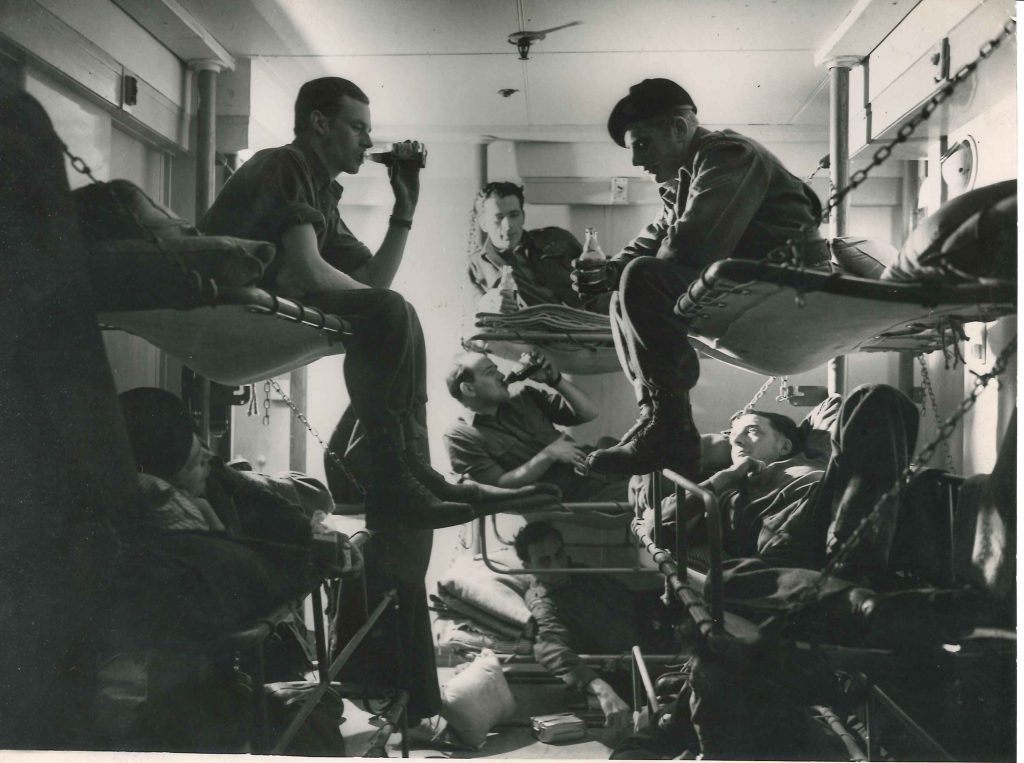
“This photo is really striking as it captures a moment in time when the Queen Elizabeth was undertaking her duties as a troopship. Perhaps these men were being transported into the chaos of WWII? It makes me wonder what they were thinking. This is probably also one of the few scenarios where being on the bottom bunk wouldn’t have been the most sought after option. I can’t imagine it being too much fun from the way the men are peeping out from the tiny lower bunks… who knows what would have been scurrying around under them? I also really like how the image is contextually ambiguous in that at first glance it could be just a candid shot of the men relaxing in their quarters, but as the troops are swigging their Pepsi Cola’s and the branding is front and centre, the image also comes across as being a very clever promotional tool.”
All of the above are available to view by appointment at Special Collections and Archives. Happy snapping!